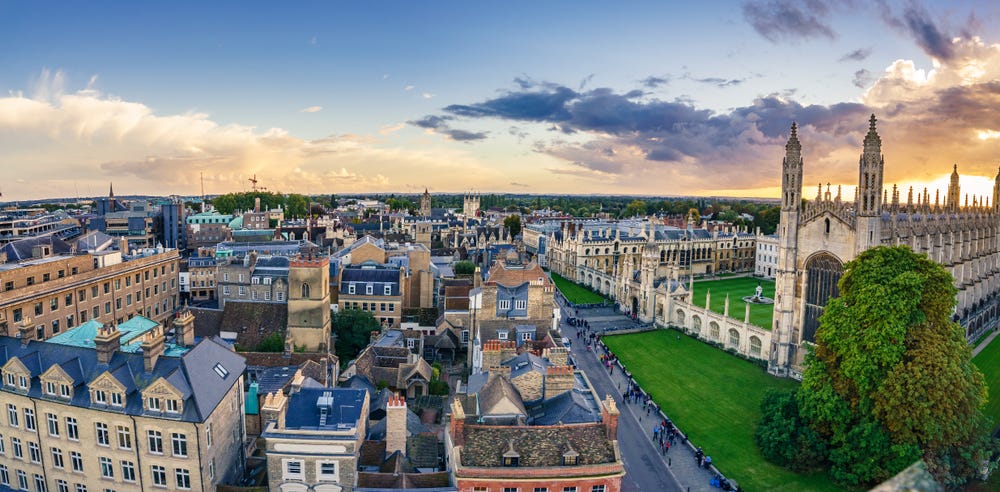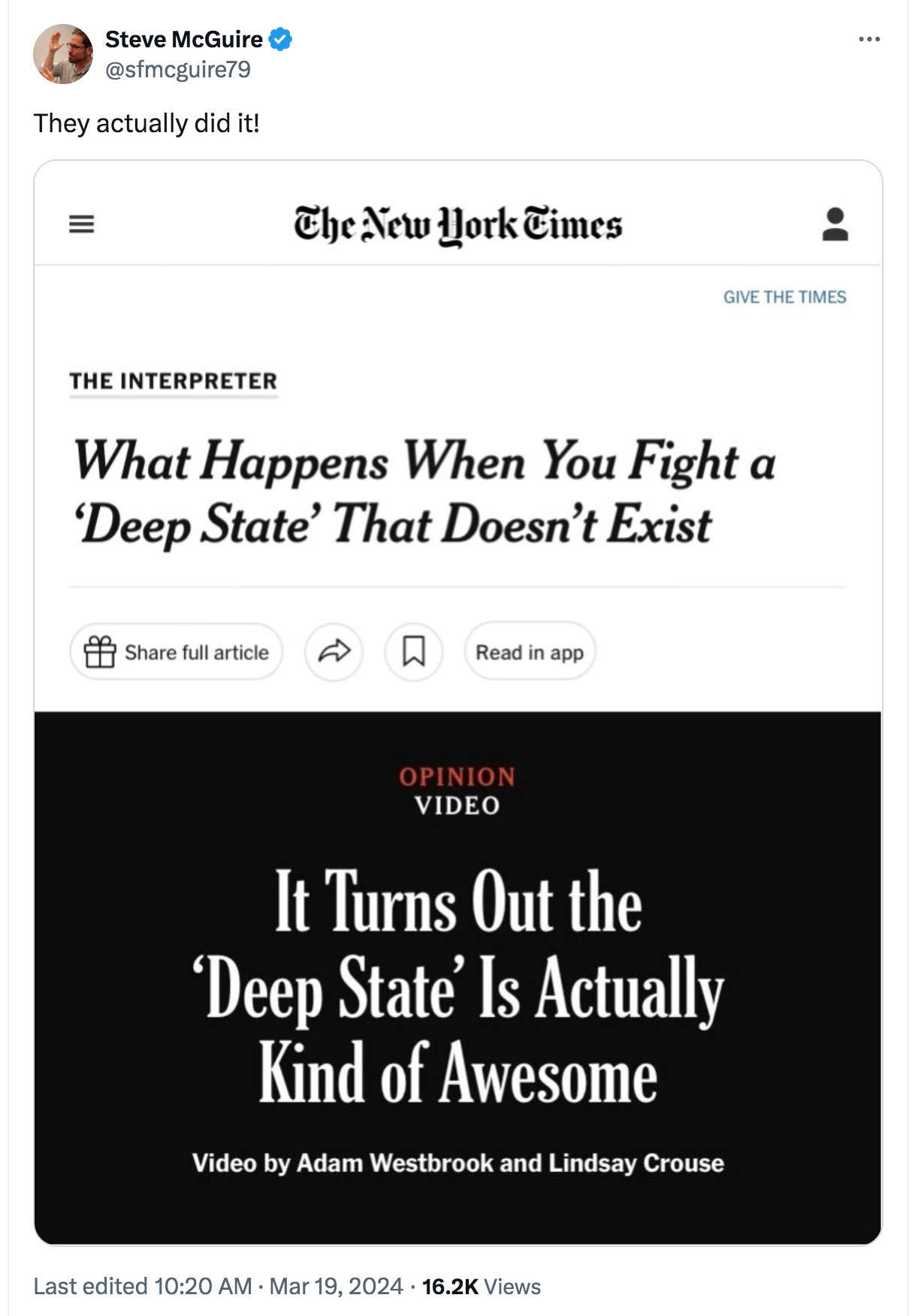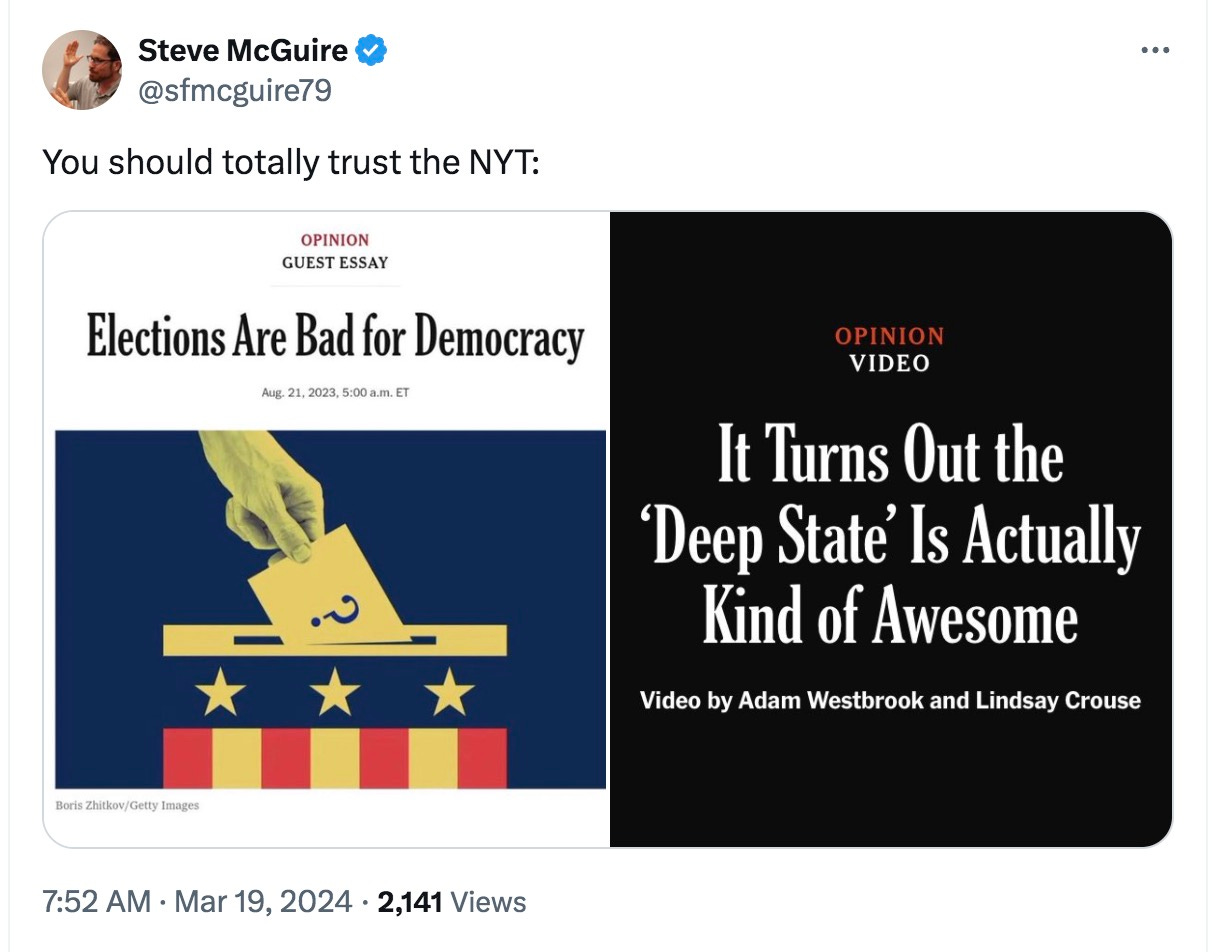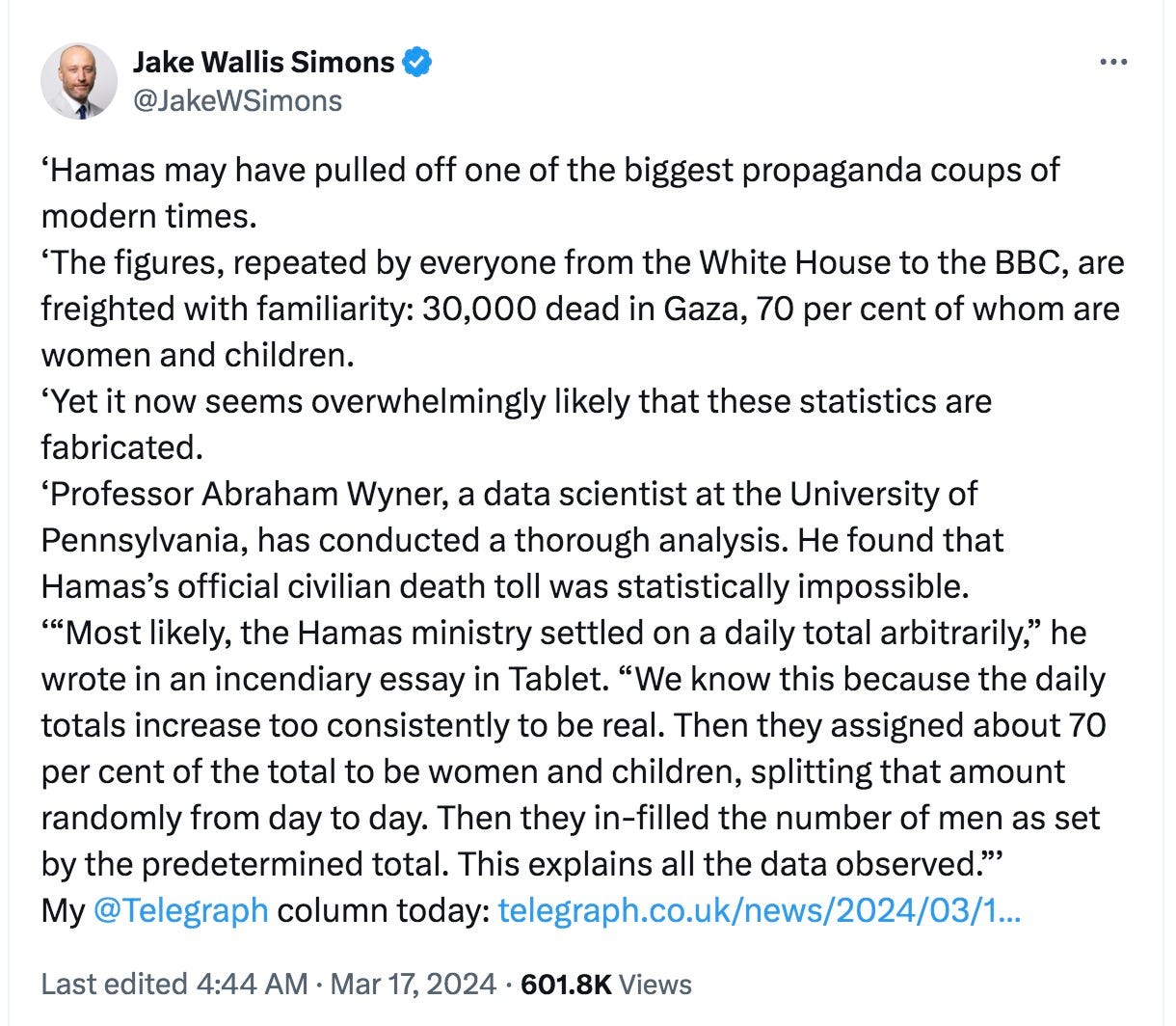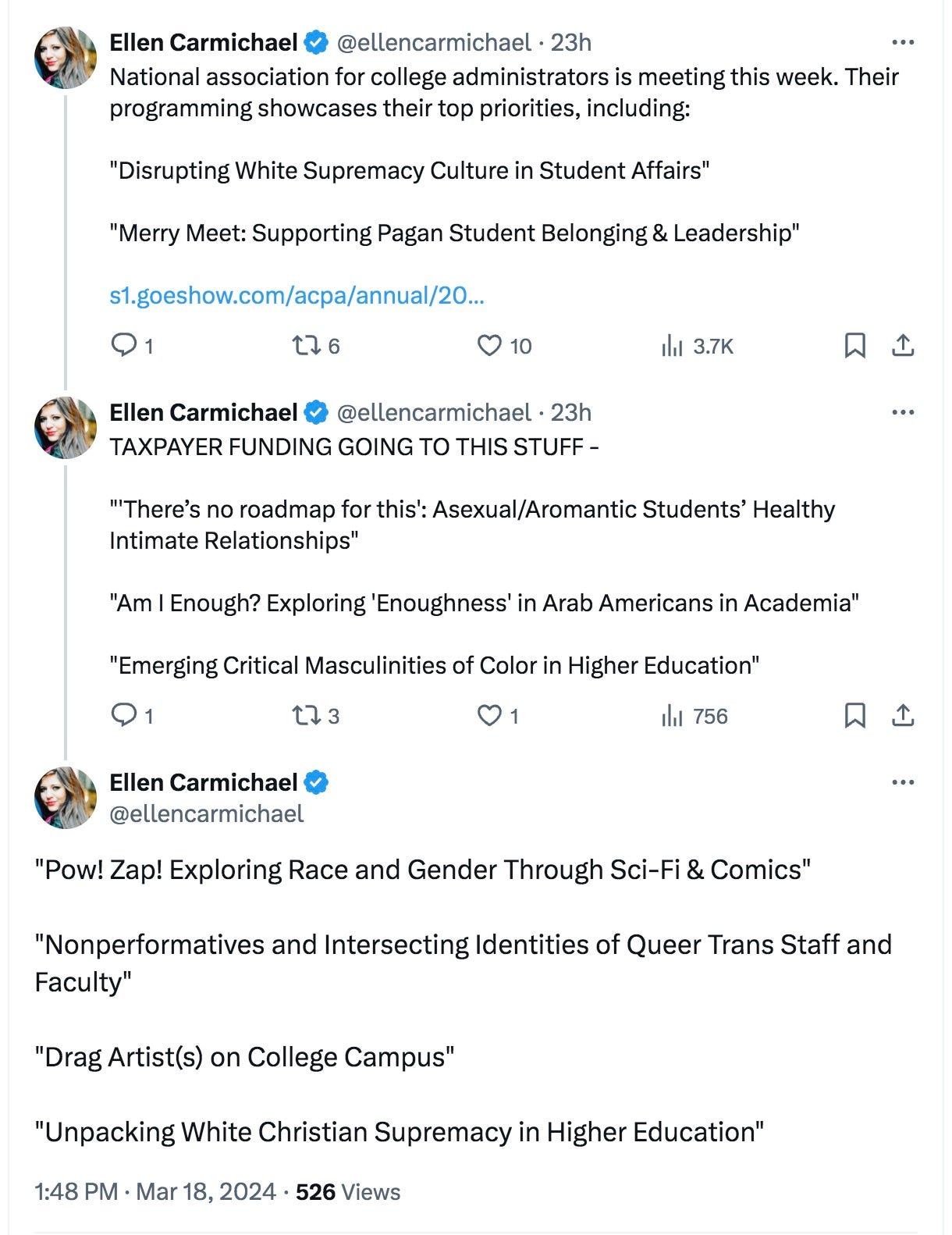E-Pluribus | March 19, 2024
Cambridge and DEI; does color blindness matter? And does journalism get what it pays for?
A round-up of the latest and best musings on the rise of illiberalism in the public discourse:
David Abulafia: Cambridge University doesn’t need DEI
The United States is not the only country struggling with diversity, equity and inclusion (DEI), or as our friends across the sea in Great Britain call it, “EDI.” David Abulafia writes for UnHerd about how the venerable Cambridge University is handling it.
Equality, Diversity and Inclusion (EDI) is a set of notions that has long sat uneasily within a university. But now the situation is becoming even worse: imitating the United States, EDI is metamorphosing into DEI (Diversity, Equity and Inclusion), whereby the reparative nature of Equity is employed to exclude (so much for Inclusion) those who have performed better, but cannot produce evidence that they suffer from a prescribed list of disadvantages. When a great university turns aside from its pursuit of outstanding excellence and indulges in social engineering, it threatens its very foundations.
One might, therefore, feel relief at the proposal to abandon the targets for state-school admission that Cambridge University has been pursuing in recent years, currently set at 69%. In fact, the state-school intake now exceeds 70%, and it was always an extremely crude instrument of measurement. This is part of a broader mulling-over of Cambridge’s admissions procedure for undergraduates, which is always a challenge: nearly 30 colleges admit students independently, and they all jealously guard their autonomy against any attempt to centralise the process.
[. . .]
The background to all this is, nonetheless, change for the better. Half a century ago, entrance to Oxbridge was dominated by famous public schools which sent extremely bright people to both universities, but could also wangle places for those who were good on the river, so long as they achieved passable results in their exams. But this history is too often simplified and caricatured. The post-war period saw a wave of students from grammar schools, and in particular from the direct-grant schools, such as King Edward’s School in Birmingham, that occupied a middle ground between the fully independent sector and the state sector. Past statistics are now manipulated to ignore the valuable social role these schools played in providing places for children from all backgrounds, many on full scholarships. Later, after the abolition of the direct grant in 1976, the assisted places scheme brought many children into private schools their parents could not afford. The abolition of this excellent scheme was the very first act of Tony Blair’s government. And the current Labour Party has similar plans to seize upon independent schools as one of its very first acts by vengefully imposing VAT on school fees.
[. . .]
It has long been understood that, where two borderline candidates of equal merit are competing for the same place, it is generally right to take into account disadvantages that one might have experienced and to favour him or her. That seems to me to be acceptable, but the danger with the new proposals is that “contextual information” will be promoted to a dominant position, and we will end up with quotas masked as “targets” once again. Much depends on what this contextual information contains: private school pupils on scholarships and bursaries may come from low-income families; some may receive free school meals. There is an opportunity here to identify candidates who often fell into a crack in the past. But the ultimate test has to be the academic excellence of the candidate.
What I am saying should not, therefore, be regarded as an attempt to sing the virtues of independent schools but as an argument that all candidates deserve unprejudiced treatment, whatever their background and whatever type of school they attend. It is not the task of universities, especially those with the highest academic reputation, to solve problems lower down in the British system of education.
Read the whole thing.
Luis Parrales: Is Colorblindness the Answer?
Martin Luther King’s words regarding his children not being judged by the color of their skin are far more controversial today than might have seemed possible decades ago, and for a completely different reason: such an idea might have previously rubbed some people the wrong way. Luis Parrales reviews Coleman Hughes’s new book The End of Race Politics: Arguments for a Colorblind America for The Dispatch to explore what drives this new divisiveness about color blindness.
Conversations about race tend to oscillate between two frustrating, polarizing extremes, between a right that often exacerbates racial animus and a left that frequently treats race as the central, enduring fact of American life.
It’s this latter tendency that Coleman Hughes explores in The End of Race Politics: Arguments for a Colorblind America. The popular podcaster and contributor to The Free Press certainly recognizes the former problem, but the thrust of his new book focuses on the trouble with overstating the role of race in our country. If we truly want to advance racial justice, Hughes contends, we’re better off abandoning any consideration of race—both in politics and in our personal conduct. In short, we should unabashedly embrace colorblindness.
Let’s clarify what colorblindness is and isn’t for Hughes. Colorblindness isn’t credulity about race; it’s not a claim that we could or should literally stop “seeing” it. And contra many progressive critics of colorblindness, it’s not indifference toward race, either. Hughes turns to colorblindness to improve our conversations about race, not to sidestep them.
Colorblindness, or more precisely what Hughes calls “the colorblind principle,” commits itself to treating individuals “without regard to race, both in our public policy and in our private lives.” For Hughes, that’s consistent with the legacy of abolition and civil rights, while today’s hyperfocus on race deviates from those achievements by entrenching race-consciousness into our laws and minds. With intentional appropriation, Hughes refers to the colorblind principle as the real anti-racism. What passes for that term—popularized by writers like Ibram X. Kendi and used frequently by proponents of critical race theory—he relabels as “neoracism” instead.
“Out of everyone in Western society,” Hughes writes, “neoracists (along with old-school racists) are the most fixated on enforcing the rules and norms surrounding the concept of race.”
[. . .]
I generally agree with Hughes’ worries about overstating the importance of race, but I’m not sure it’s accurate to regard it as meaningless for many people—or to treat personal considerations of race as essentially gateways to neoracism. To focus on black America, race was clearly used to justify the horrors of slavery and the bigotry of Jim Crow. Nevertheless, the concept of race seems inextricable from the philosophy of abolition, the development of jazz and the blues, literary movements like the Harlem Renaissance, and even the linguistic contributions of black America.
Read it all here.
Graciela Mochkofsky: One Way to Help a Journalism Industry in Crisis: Make J-School Free
The internet has dramatically changed not only how people get their news, but from whom they get it, as well. Writing at the New York Times, Graciela Mochkofsky, dean at City University of New York’s journalism school, says the journalism industry must invest more resources if it hopes to preserve a place in the new information ecosystem and proposes a bold solution for journalism schools: stop charging tuition.
Research shows that towns that have lost sources of local news tend to suffer from lower voter turnout, less civic engagement and more government corruption. Journalists are essential just as nurses and firefighters and doctors are essential.
And to continue to have journalists, we need to make their journalism education free.
This might sound counterintuitive given the state of the industry. Shrinking revenue and decreasing subscription figures have led to a record number of newsroom jobs lost. Much of the local news industry has fallen into the hands of hedge funds focused on squeezing the last drops of revenue out of operations by decimating them. Billionaires who appeared as saviors just a few years ago have grown tired of losing money on the media organizations they bought. Public trust in the value of news is at historical lows, while a growing percentage of people are avoiding the news altogether.
Generative artificial intelligence, which is on the verge of reshaping almost everything around us, is bringing yet another technological disruption to the industry. Against this grim backdrop, authoritarian leaders are increasingly targeting journalists as political enemies both at home and abroad.
[. . .]
We must also move beyond the lack of economic and demographic diversity that has long been a problem in the industry. News has too often been reported by predominantly middle-class, white, male journalists, resulting in coverage that has repeatedly missed the issues that are most important to the people receiving the news, contributing to the public’s lack of trust in the media.
In a resource-starved industry, few newsrooms can offer the type of mentoring, guidance and time that it takes to shape a great journalist. This is now primarily the responsibility of journalism schools. It is the civic duty of these schools to find and train reporters and news leaders, instill in them an ethical foundation, help develop their critical thinking skills, allow them to try and fail in a safe environment, open doors and provide a support network. (Journalism schools should also contribute research in a variety of areas, from the impact of A.I. to new business models to identifying and responding to emerging threats.)
But the cost of a journalism education has become an insurmountable barrier for exactly the kind of people we need the most. And those who, with great effort, manage to overcome that barrier, carry a weight that could limit their professional options.
Reporters burdened with debt are less likely to take professional risks and more likely to abandon the field. According to the Bureau of Labor Statistics, the median reporter salary in America is less than $56,000 a year, or about $27 per hour. In low-income areas, where news deserts are more prevalent, annual salaries can be as low as $20,000. A Wall Street Journal report about the debt-to-income ratio of alumni of 16 journalism masters programs found that many graduates leave with debts that exceed their postgraduate income.
Read it all.
Around Twitter (X)
The New York Times loves the deep state!
Here’s Jake Simons in the Telegraph with some thoughts on those casualty figures provided by Hama—er, the Gaza Health Ministry:
And finally, via Ellen Carmichael, a peek inside the upcoming American College Personnel Association conference:




